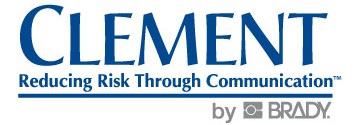Beryllium Standard: Final Rule in the Books
OSHA has published a final rule revising the beryllium standard for general industry. The final rule includes changes designed to clarify the standard, and simplify or improve compliance. These changes maintain protection for employees while ensuring that the standard is well understood and compliance is simple and straightforward.
The final rule amends the following paragraphs of the beryllium standard for general industry: “Definitions,” “Methods of Compliance,” “Personal Protective Clothing and Equipment,” “Hygiene Areas and Practices,” “Housekeeping,” “Medical Surveillance,” “Hazard Communication” and “Recordkeeping.” It also has a new Appendix A: “Operations for Establishing Beryllium Work Areas.”
The element beryllium is a grey metal that is stronger than steel and lighter than aluminum. Beryllium is used industrially in three forms: as a pure metal, as beryllium oxide and most commonly, as an alloy with copper, aluminum, magnesium or nickel. OSHA estimates that approximately 62,000 workers are potentially exposed to beryllium in approximately 7,300 establishments in the United States. Workers in industries where beryllium is present may be exposed to beryllium by inhaling or contacting beryllium in the air or on surfaces. Inhaling or contacting beryllium can cause an immune response that results in an individual becoming sensitized to beryllium. Individuals with beryllium sensitization are at risk for developing a debilitating disease of the lungs called chronic beryllium disease (CBD) if they inhale airborne beryllium after becoming sensitized. Beryllium-exposed workers may also develop other adverse health effects such as acute beryllium disease and lung cancer.
The deadline for compliance with the final standard is Sept. 14, 2020, although OSHA has been enforcing most of the provisions for general industry since Dec. 12, 2018. The agency began enforcing the provisions for change rooms and showers on March 11, 2019, and engineering controls on March 10, 2020.

